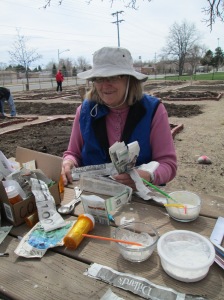

Its been a busy garden season and with the big harvest this year, I’ve been too busy to write. But today, I received a copy of an article that features my garden exploits and want to share it. Several months ago, my sister’s friend Tyler, asked if she could interview me about my experience as a master gardener for an article she was writing. I answered a few quick questions late at night so she could meet her midnight deadline — and forgot all about it.
Fast forward three months and I receive an email from a Wisconsin woman wondering if she could hire me to help plan her son’s garden in Denver. Of course, that’s the kind of thing I do — plan gardens — but I wondered how she’d gotten my contact information. In her email, she mentioned an article in “Exclusively Yours”, a local magazine I grew up reading in Wauwatosa, Wisconsin. In an effort to locate the article, I googled and called the magazine, called my mom and sister who live in Wisconsin. Nothing. Finally, my new fan emailed a copy and it all came back to me.
Its fun to share my passion for gardening with everyone I know. In the article, I mention the master gardening program at Denver Urban gardens, my donation garden at St. Philip Lutheran Church, the new donation garden I helped plan at Harvard Gulch Golf Course and more. Check it out. Please contact me if you want to talk gardening or need help getting yours started. anaincolorado@gmail.com.

















